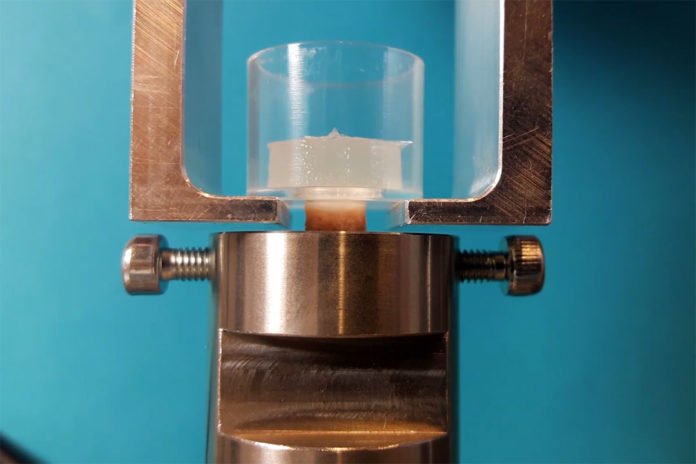A few kinds of body tissue, similar to cartilage and meniscus, have little or no blood supply and can’t recuperate whenever harmed. One promising way to deal with this issue is to infuse a hydrogel loaded with repair cells or medications into the damaged area in the expectation of invigorating tissue recovery.
Be that as it may, commercials hydrogels don’t remain put in the wake of being connected to the treatment area as a result of pressure from the body’s developments and the flow of bodily liquids.
Doctors, therefore, use special membranes to keep the hydrogel in place, yet those membranes are attached with sutures that perforate the very tissue the hydrogel is supposed to heal.
Now, EPFL scientists have created a biocompatible hydrogel from almost 90% of water to naturally adheres to soft tissues like cartilage and the meniscus. This hydrogel can withstand mechanical stresses and extensive deformation and therefore eliminates the need for a separate binding process.
In reality, this newly created hydrogel consists of a double-network matrix and a fiber network. This structure safeguards the material’s strong adhesive capacity by blunting the effect of mechanical stresses.
Dominique Pioletti, research led said, “The double network structure distributes incoming mechanical energy throughout the hydrogel, so that the material shows adhesion improvement when it is compressed or stretched. In hydrogels that lack these damping mechanisms, the mechanical stresses are concentrated on the interface between the hydrogel and the tissue, and the hydrogel comes off quite easily.”
“Our hydrogel is ten times more adhesive than currently available bioadhesives on the market such as fibrin. And thanks to its high water content, our hydrogel is very similar in nature to the natural tissue it’s designed to heal.”
Martin Broome, who heads the Oral and Maxillo-Facial Surgery Department at the University Hospital of Lausanne (CHUV) and is a co-author of the article, is convinced that this type of hydrogel could make a real difference. “If we build on the hydrogel’s remarkable adhesive properties, that could open the door to a large number of potential applications. One day, for example, it might be used in place of metallic materials like titanium to set bone fractures. More immediately, we may no longer need to use complex sutures on some types of soft tissue.”
Pioletti said, “In its current form, the hydrogel developed at EPFL can adhere to several types of tissue. The next step for the researchers will be to tailor it to specific applications. Now that our material has demonstrated its superior mechanical properties, we are going to work on loading it with different agents that could help heal a patient’s cartilage or meniscus.”
The study is published in the journal Applied Materials & Interfaces.
